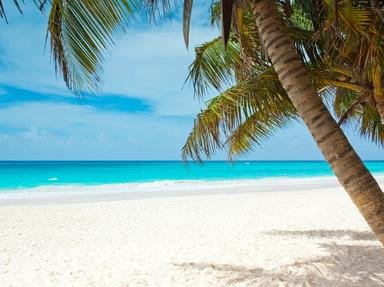Quiz Answer Key and Fun Facts
1. How many islands did the Netherlands Antilles have, after 1986?
2. Which of these islands is shared with France?
3. The Netherlands Antilles consisted of two island groups, a northern group and a southern group. Which three islands were in the northern part of the Netherlands Antilles?
4. What was the smallest island of the Netherlands Antilles?
5. What Caribbean island used to be the sixth island of the Netherlands Antilles and now has a 'Status Aparte'?
6. What's the capital of the island Bonaire?
7. The National Holiday on the Netherlands Antilles was, before 2010, on what day?
8. The island of Curacao was once ______ .
9. The northern islands of the Netherlands Antilles were located _______ of the Virgin Islands.
10. What is Papiamento?
Source: Author
piet
This quiz was reviewed by FunTrivia editor
agony before going online.
Any errors found in FunTrivia content are routinely corrected through our feedback system.
